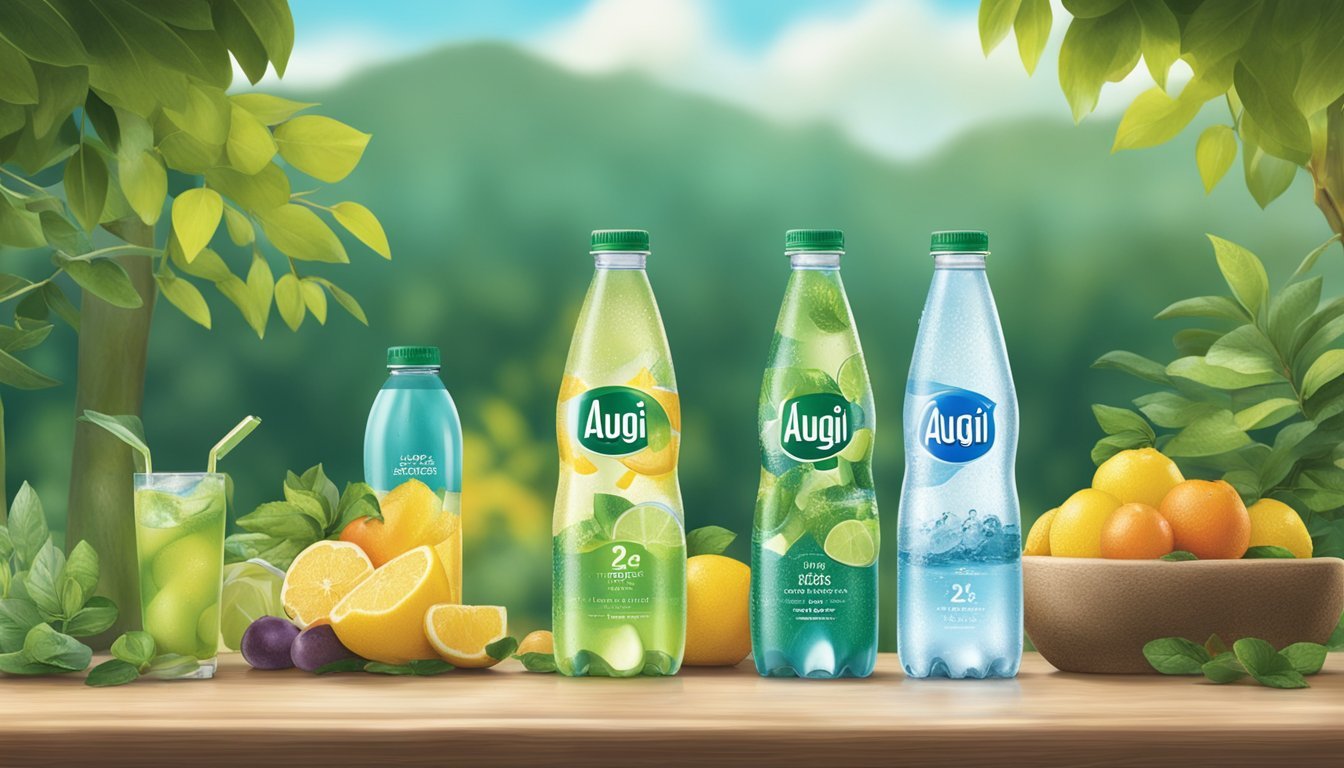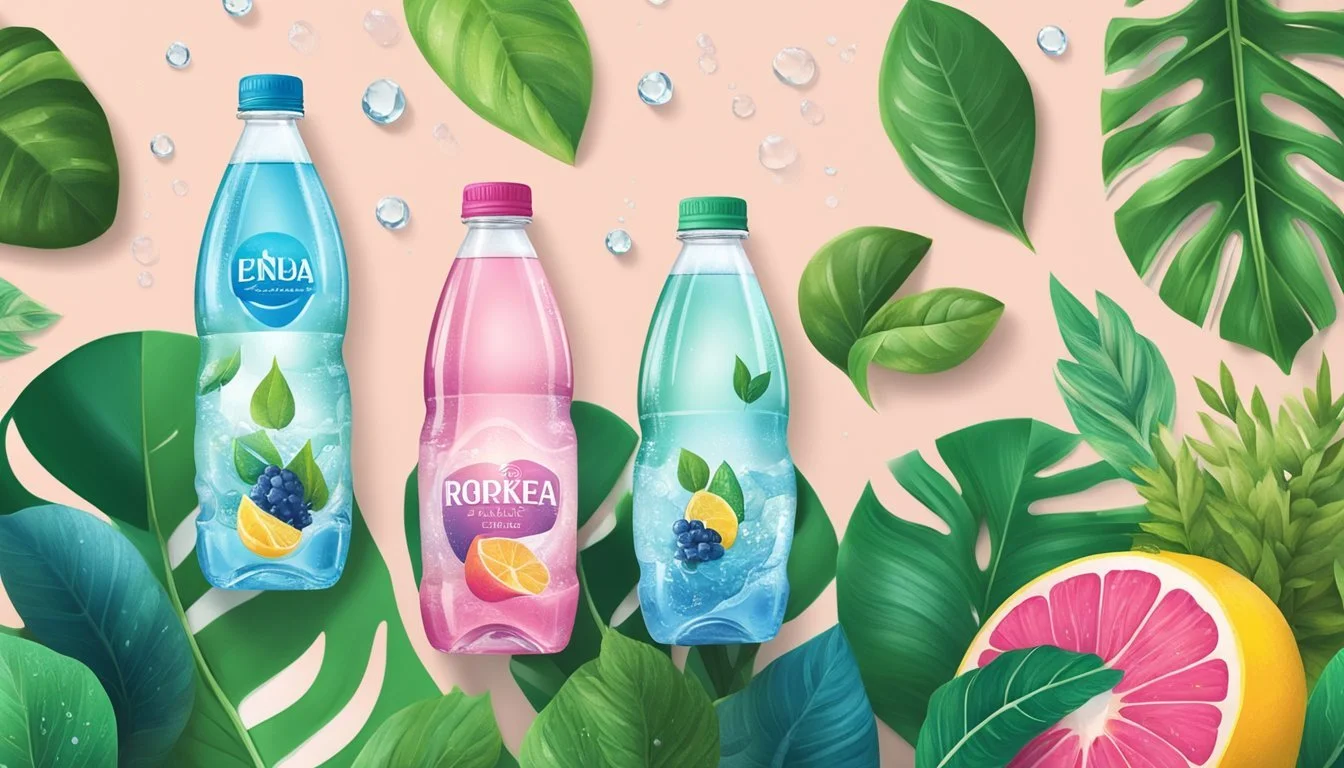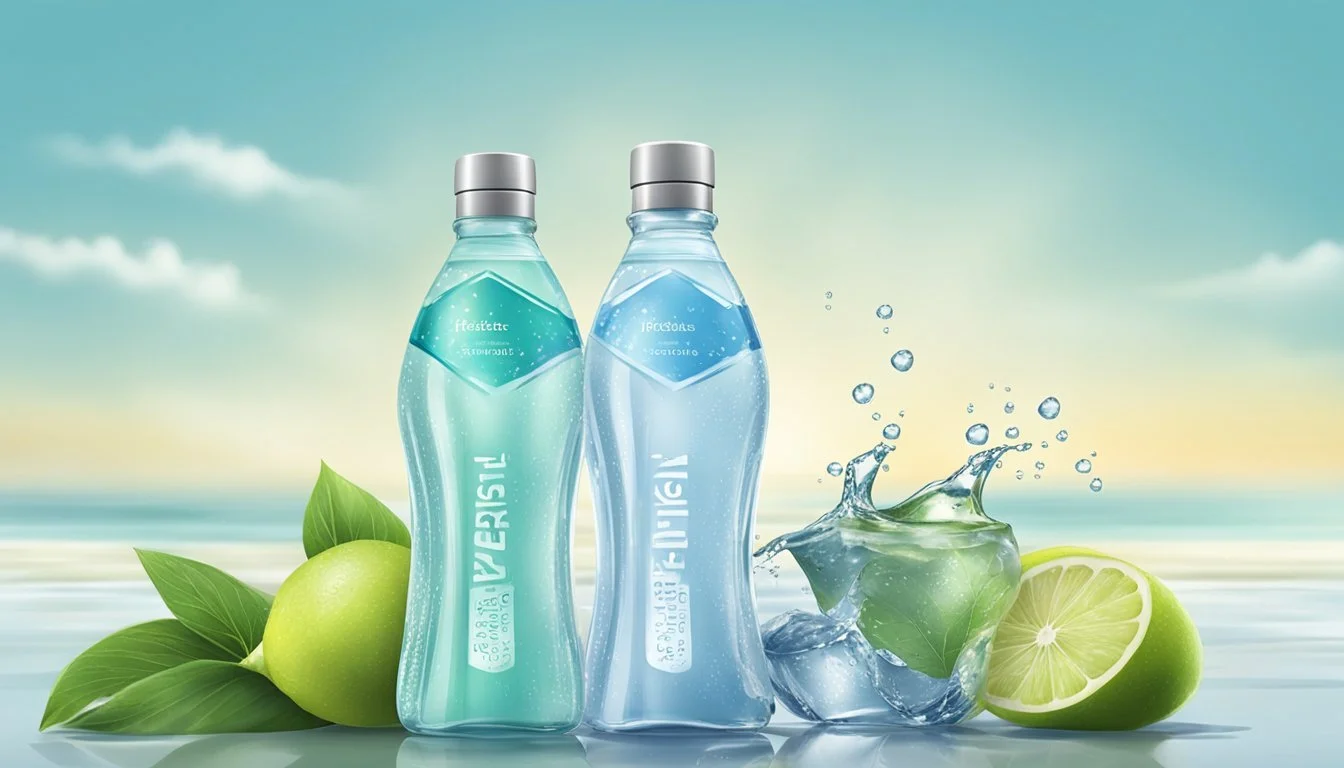Augi vs. Refreshe
An Expert Comparison of Bottled Waters
Choosing the right bottled water can make a significant difference in taste and quality. Augi, originating from the Leesburg, Va., municipal water supply, offers a unique flavor profile that some may find slightly sulphuric but others might perceive as fishy. Refreshe, on the other hand, is known for its crisp, clean taste that appeals to those seeking a refreshing option.
When comparing Augi to Refreshe, Refreshe often stands out due to its more neutral taste and higher consumer satisfaction. Refreshe's consistency and lack of aftertaste make it a preferred choice for many over Augi's more distinct flavor.
In the booming bottled water industry, factors such as taste, source, and packaging play crucial roles in consumer preferences. With Augi's noticeable flavor and Refreshe's widespread appeal, it's clear that each brand delivers a different experience, catering to various tastes.
The Rise of Bottled Water
Bottled water has transformed from a luxury item into a global necessity. Its growth can be attributed to historical trends and the variety of water types available today.
Historical Context and Modern Popularity
The widespread popularity of bottled water began in the late 20th century. Key brands like Evian started gaining traction by marketing the purity and health benefits of their products.
By the 1990s, brands like Aquafina and Dasani emerged, backed by major corporations like Pepsi and Coca-Cola. They popularized bottled water through extensive marketing campaigns, appealing to health-conscious consumers.
In recent decades, growth has been driven by convenience and safety concerns. Global sales from 109 countries grew 73% between 2010 and 2020. This surge reflects an increasing preference for bottled water over tap water, driven by concerns about water quality and taste.
Types of Bottled Water
Bottled water comes in various types to cater to different preferences. Spring water, such as Fiji Water and Evian, is sourced from natural springs and is often marketed for its purity.
Purified water brands like Aquafina and Pure Life undergo comprehensive filtration processes to remove impurities.
Mineral water contains natural minerals and is often sourced from mineral springs. Brands like Smartwater add electrolytes for taste and purported health benefits.
Sparkling water is carbonated and includes options like Perrier. Each type offers unique benefits, driving consumer choice and preference in the booming bottled water market.
Health and Hydration
Proper hydration is crucial for overall health, influencing everything from physical performance to cognitive function. Key considerations include the necessity of hydration, the role of water as a nutrient source, and the impact of pH levels on health.
Necessity of Hydration
Hydration is essential for maintaining bodily functions and preventing dehydration. It ensures efficient physiological processes like digestion, circulation, and temperature regulation.
Drinking enough water daily helps transport nutrients and remove waste. Both Augi and Refreshe provide the hydration needed for daily activities. Opting for bottled water can offer a convenient hydration source, particularly when on-the-go.
Water as a Nutrient Source
Water can also be a valuable source of essential minerals such as calcium, potassium, and sodium. These minerals support various bodily functions, including bone health and muscle function.
Augi and Refreshe may contain varying levels of these nutrients depending on their source and processing. Checking the label for mineral content helps consumers choose the best option for their dietary needs.
pH Levels and Health Implications
The pH level of water can influence its taste and potential health benefits. While there are varying opinions on alkaline water, it generally has a higher pH than regular water and is believed by some to neutralize acidity in the body.
Both Augi and Refreshe offer water with different pH levels. Measured pH values can have implications for people sensitive to changes in acidity. Always examining these values assists in selecting water that aligns with personal health preferences.
Sourcing and Purification Process
The sourcing and purification processes of bottled water play a crucial role in determining its quality and environmental impact. This guide examines the differences and techniques used by Augi and Refreshe in ensuring their bottled water meets high standards.
Natural Spring Water vs. Purified Water
Augi typically sources its water from natural springs. Natural spring water is groundwater that flows to the surface naturally, often collected from protected underground reservoirs. This type of water often retains naturally occurring minerals, giving it a distinct taste and potential health benefits.
Refreshe, on the other hand, usually offers purified water. Purified water goes through various treatments to remove impurities and contaminants. The origin of purified water can be from different sources, including groundwater or even municipal supplies before undergoing the purification process. This results in water that is more consistent and free from most contaminants.
Methods of Water Purification
Both brands use significant purification technologies to ensure water quality. Augi employs methods such as microfiltration and UV disinfection, focusing on retaining the natural mineral content while ensuring safety.
Refreshe uses a more intensive process that includes reverse osmosis. This method forces water through a semi-permeable membrane to remove chemicals, bacteria, and other impurities. The process often concludes with the remineralization of water to enhance taste.
Comparison Table:
Brand Purification Method Final Treatment Augi Microfiltration, UV Mineral Retention Refreshe Reverse Osmosis Remineralization
Environmental Impacts of Water Sourcing
The environmental footprint of bottled water is significant. Augi's sourcing from natural springs can impact local ecosystems if not managed sustainably. Responsible extraction is essential to ensure that natural water sources are not depleted.
Refreshe's use of municipal water sources for purified water can be seen as more environmentally friendly in areas where spring water is scarce. However, the energy-intensive nature of purification methods like reverse osmosis can offset these benefits.
Both brands must also consider the environmental impact of bottling and distribution. Sustainable practices in packaging and transport can help mitigate these impacts. Steps like using recyclable materials and optimizing supply chains are essential for reducing the ecological footprint of bottled water.
Bottling and Packaging
The bottled water industry emphasizes the materials used in bottling and strict safety regulations to ensure product quality. Augi and Refreshe both use various materials that affect the environment and consumer health.
Materials Used in Bottling
Augi typically uses glass bottles, which are known for being more environmentally friendly and preservative-free. Glass is preferred by many for its recyclability and low chemical interaction with water.
Refreshe, on the other hand, largely relies on plastic bottles. These plastic bottles are often made from PET (Polyethylene Terephthalate), a common material that is lightweight and cost-effective but raises environmental concerns due to plastic waste.
Plastic water bottles are scrutinized for containing BPA (Bisphenol A), a chemical used in producing certain plastics which may leach into the water. However, most modern bottled water brands, including Refreshe, now use BPA-free plastics.
Regulations and Safety Standards
FDA regulations govern the safety and quality of bottled water. Both Augi and Refreshe must comply with these stringent standards to ensure consumer safety. The FDA requires bottled water to meet standards similar to those for tap water, making bottled water a regulated food product.
Water bottling companies are subjected to regular inspections and must abide by Good Manufacturing Practices (GMPs). This involves standards in sanitation, laboratory testing, and manufacturing processes to ensure that the water remains free from contaminants.
Additionally, bottled water is often tested for various contaminants, like bacteria and heavy metals, to meet safety guidelines. This testing process ensures that both Augi and Refreshe maintain high safety standards in their production processes.
Taste and Mineral Content
Examining the taste and mineral content of Augi and Refreshe bottled waters is crucial for understanding which might better suit your preferences. Both water brands have distinct mineral profiles that significantly influence their flavors.
How Minerals Affect Flavor
Minerals such as calcium, sodium, potassium, and iron play a significant role in water taste. Calcium often imparts a slightly milky or chalky taste, appealing to those who enjoy a smooth texture. Sodium can enhance sweetness but may also add a slight tang. Potassium contributes to a balanced taste, ensuring water doesn't seem too flat. Iron, although minimal in most bottled waters, can lend a metallic taste if present in higher amounts.
Mountain Valley water, for instance, is noted for its light and clean taste, which can be attributed to its balanced mineral content. In contrast, waters with high total dissolved solids (TDS) may taste richer or more complex but might not be favored by everyone.
Comparison of Mineral Content in Brands
When comparing Augi and Refreshe, their mineral contents provide insight into their distinct flavors. Refreshe artesian water has a pH level of 7.4 and boasts no additives, ensuring a neutral and clean taste beneficial for hydration without altering flavors much. The electrolyte content in Refreshe includes neither sodium nor potassium, making it a straightforward choice for those avoiding these minerals.
Conversely, Augi might contain different levels of electrolytes, contributing to its unique taste profile. If Augi includes moderate sodium or calcium, this could enhance its flavor by making it taste crisper or softer, an important consideration for anyone discerning about water taste.
Brand Analysis: Augi vs. Refreshe
Both Augi and Refreshe are contenders in the bottled water market, each bringing unique offerings and characteristics. This comparison looks at brand identities, their product offerings, and nutritional specifics.
Brand Overview
Augi is known for its commitment to sustainability and eco-friendly packaging. The brand markets itself on purity and a smooth taste profile. Augi bottles are made with recyclable materials and often feature innovative designs.
Refreshe offers a more budget-friendly option, often found in grocery stores and big-box retailers. It emphasizes affordability while maintaining decent quality. Refreshe provides a straightforward, no-frills approach to bottled water, appealing to consumers looking for value.
Product Range and Offerings
Augi focuses on premium options, sourcing water from protected natural springs. They offer spring water in multiple sizes, catering to different consumer needs. Their range includes standard bottles as well as sports caps for convenience.
Refreshe, by contrast, has a wider array of options. From purified to spring water, and even flavored varieties, Refreshe aims to cover broader market segments. Their products are available in various sizes, including large 1-gallon jugs, making it easier for families and bulk buyers to get what they need.
Nutritional Information
Augi prides itself on low TDS (total dissolved solids) levels, ensuring a crisp and refreshing taste. The mineral content is balanced to support hydration without overpowering the palate. The focus is on maintaining high purity standards similar to brands like Evian and Fiji.
Refreshe offers water that is generally purified with a neutral pH balance. While it may not have the distinct mineral profiles of premium brands like Dasani or Smartwater, it provides a reliable hydration option. Their flavored water lineup might contain added sugars or artificial flavors, which can be a consideration for health-conscious consumers.
By examining these aspects in detail, consumers can make an informed choice between Augi and Refreshe based on their preferences and needs.
Consumer Experience and Convenience
When choosing between Augi and Refreshe bottled water, important factors include availability in grocery stores and the overall convenience associated with each brand.
Availability in Grocery Stores
Augi and Refreshe are both well-recognized brands. Augi has a strong presence in many high-end and specialty grocery chains. It can be found in select locations, often highlighting its premium positioning.
Refreshe, on the other hand, is widely available across numerous grocery store chains such as Albertsons and Safeway. This makes Refreshe more accessible to a broader audience. Its widespread availability ensures that consumers can reliably find this brand during regular shopping trips.
The Convenience Factor
Consumers appreciate the convenience associated with both Augi and Refreshe. Augi often packages its water in sleek, easy-to-carry bottles which appeal to those on the go.
Refreshe, in contrast, emphasizes value and availability. It is often sold in various bulk sizes, appealing to families and individuals looking for cost-effective options. Additionally, Refreshe offers easy-open caps and lightweight bottles, adding to the overall convenience.
Both brands aim to meet the needs of their specific market segments, making their products convenient for different types of consumers. This results in distinct experiences centered around convenience for each brand.
Environmental and Ethical Considerations
When choosing between Augi and Refreshe, evaluating their environmental and ethical impacts is crucial. This covers the carbon footprint from production, water sourcing ethics, and brand-led sustainability initiatives.
Environmental Footprint of Bottling
The production of bottled water involves significant CO2 emissions. For example, producing 50 ounces of bottled water can release between 1.6 and 22 ounces of CO2. In comparison, tap water consumption has nearly zero emissions.
Augi sources its water from the Leesburg, Va., municipal supply. The purification process might require additional energy, impacting CO2 output. Refreshe’s sourcing and production details should be directly examined for similar impacts.
The packaging material also plays a role. Single-use plastic bottles contribute heavily to environmental waste, while brands using recycled materials or encouraging bottle reuse show a reduced carbon footprint.
Ethical Practices in Water Sourcing
Ethical water sourcing involves transparency about the origins and treatment of water. Brands that disclose source locations and purification methods are seen more favorably.
For instance, Augi provides information on its municipal water source, enhancing its transparency. Refreshe’s ethical practices in water sourcing would need to be critically assessed based on similar criteria.
Ethically sourced water also ensures community access to clean water isn’t compromised. Brands engaging in unsustainable water extraction practices can negatively affect local ecosystems and communities.
Sustainability Initiatives by Brands
Both brands’ sustainability efforts are essential. Companies adopting environmentally friendly practices strengthen their appeal to conscious consumers.
Efforts like using recycled materials for bottles, investing in renewable energy for production, and implementing bottle return schemes are significant steps. For instance, reusable water bottles, such as those from Nalgene and Camelbak, demonstrate the long-term environmental benefits over single-use bottles.
Monitoring the effectiveness and transparency of these initiatives ensures that brands’ claims align with their actions. Consumers should look for certifications and independent evaluations of a brand’s sustainability efforts for informed choices.
Comparative Analysis
Both Augi and Refreshe bottled water offer distinct features when it comes to taste, price, and quality.
Taste Test Feedback
Augi is known for its crisp, clean taste with a slight hint of minerals that adds character without overwhelming the palate. It has been praised for its smooth texture and refreshing quality.
Refreshe, described as artesian water, delivers a light and clean flavor, thanks to its natural source and balanced pH of 7.4. It lacks any additives, allowing the natural taste to shine through. Comparatively, while both waters are praised for cleanliness, Augi’s minerality may appeal more to those seeking a unique taste profile.
Price Point Comparison
Augi tends to be positioned in the premium segment of the market. This often translates to higher prices compared to mainstream brands.
Refreshe, on the other hand, falls into a more budget-friendly category. It is typically available at a lower price point, making it accessible to a more extensive range of consumers. For buyers who prioritize cost without sacrificing too much on quality, Refreshe offers a competitive alternative.
Quality Reports and Certifications
Augi's bottling process adheres to rigorous standards, ensuring high-quality water. It is often certified for purity, balancing minerals and ensuring no harmful contaminants.
Refreshe boasts clear labeling with a detailed breakdown of its contents. The water's source and composition are transparent, verified by third-party tests ensuring it meets health standards.
Both brands meet safety and quality benchmarks, yet Augi might have an edge for those looking for certified premium water.
By comparing these elements, consumers can make an informed decision based on taste preferences, budget constraints, and trust in quality assurances.
Conclusion: The Verdict on Augi vs. Refreshe
When comparing Augi and Refreshe, several factors come into play. Taste is often the first consideration. Augi is known for its crisp, clean taste, while Refreshe has a subtle, almost sweet undertone which appeals to a different palate.
Health benefits are another critical aspect. Augi is praised for its balanced mineral content, which can contribute to daily nutrient intake. Refreshe, on the other hand, is noted for its purity, featuring fewer additives and is often sourced from natural springs.
Environmental impact also affects the decision between these two brands. Augi emphasizes sustainability with eco-friendly packaging. Refreshe has made strides in this area as well, but Augi’s commitment to reducing its carbon footprint gives it an edge.
Availability and price can influence consumer choices too. Augi is often priced higher due to its premium positioning, but its quality justifies the cost. Refreshe tends to be more affordable and widely available in various retail stores.
Comparison Table:
Criteria Augi Refreshe Taste Crisp, clean Subtle, slightly sweet Health Benefits Balanced mineral content High purity, fewer additives Environmentally Friendly Sustainable packaging Improving eco-friendly initiatives Price Higher, premium quality Affordable, readily available
In summary, the choice between Augi and Refreshe ultimately depends on personal preferences regarding taste, health considerations, and environmental concerns. Each brand has its merits, making it essential to weigh these factors based on individual priorities.










